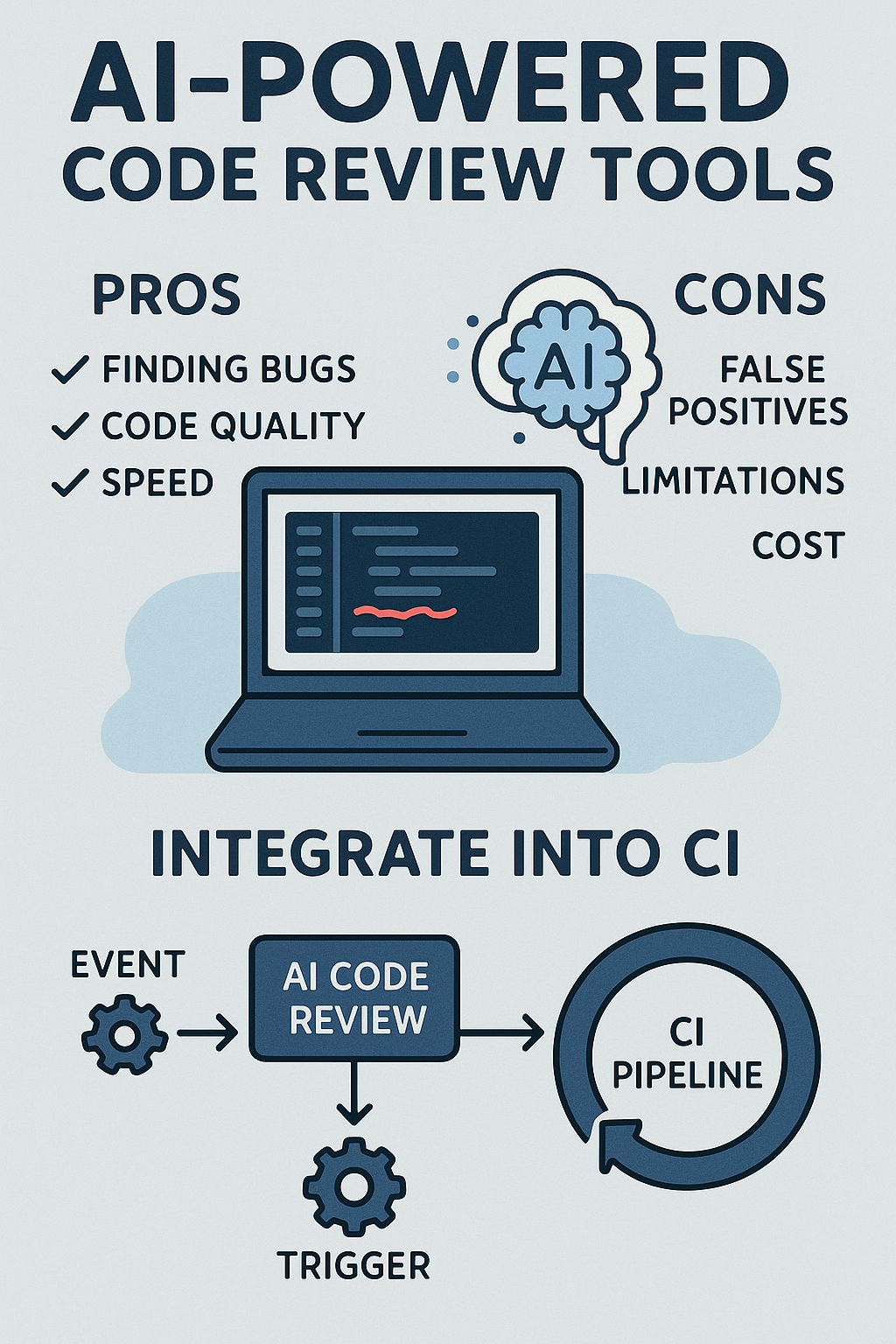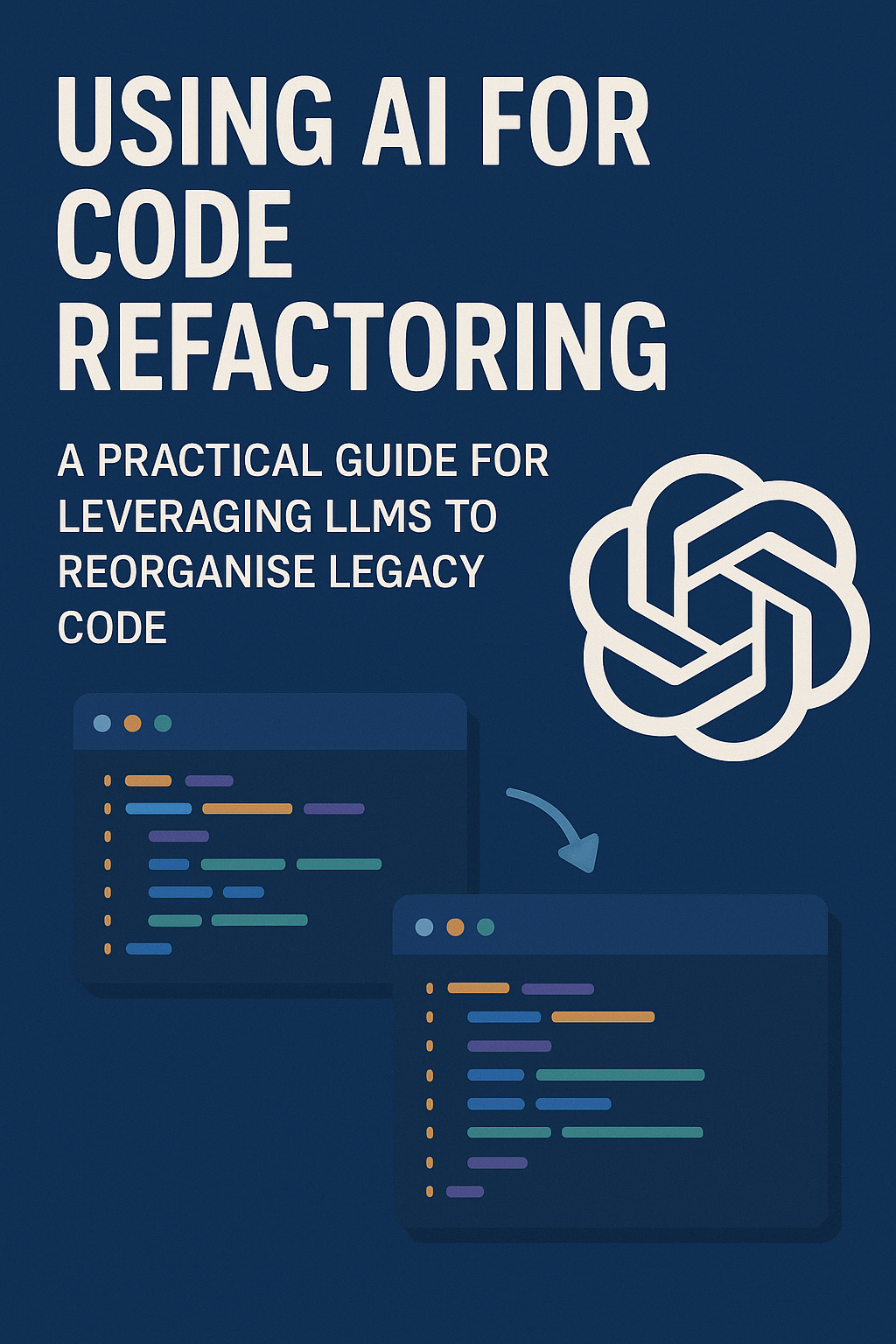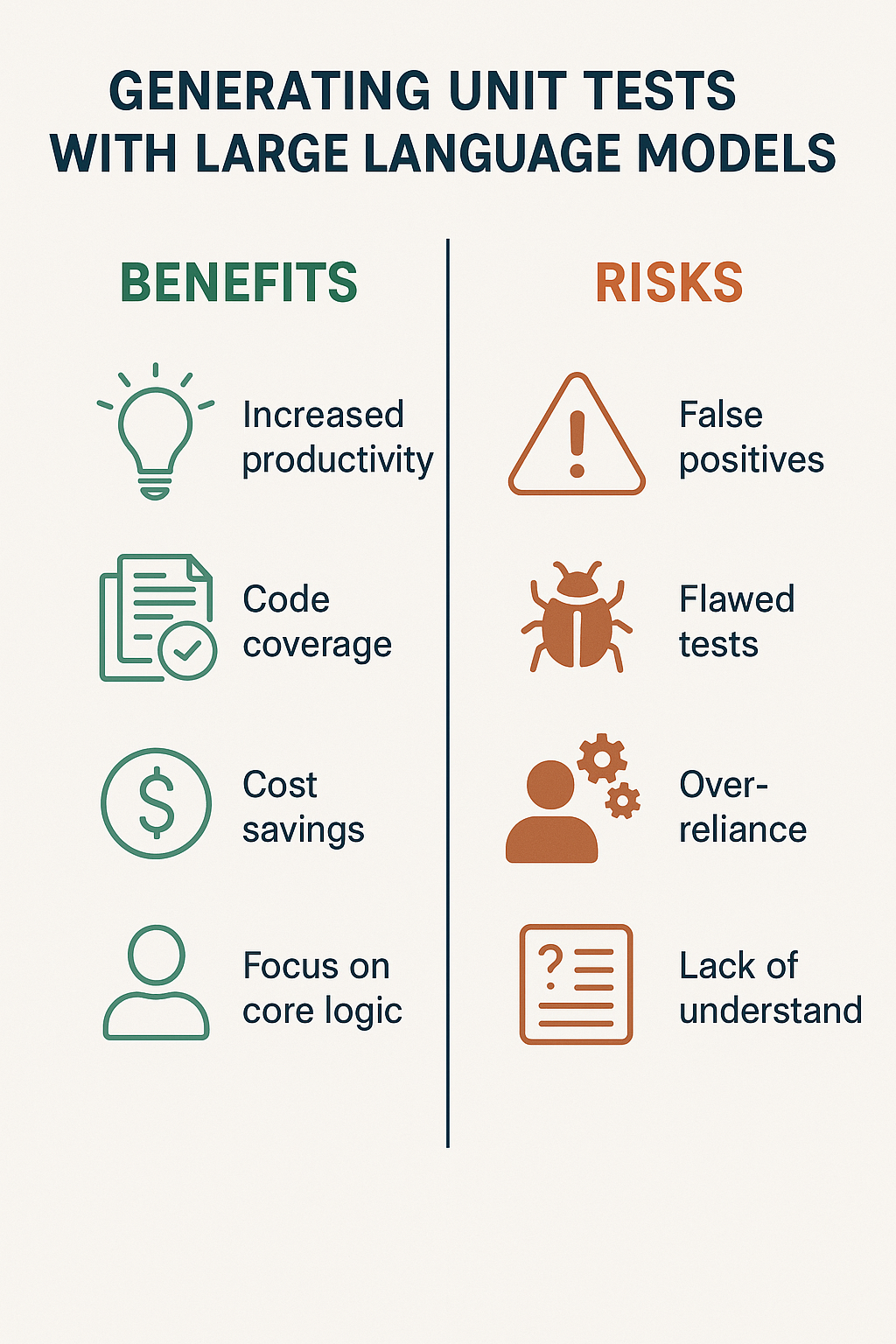
Introduction
Code reviews are essential for catching bugs, ensuring quality, and maintaining consistency across a team. But manual reviews can be time-consuming and prone to human error.
That’s where AI-powered code review tools step in. These tools use large language models (LLMs) and machine learning to assist developers by spotting issues, suggesting improvements, and even automating parts of the review process.
In this article, we’ll explore the pros and cons of using AI for code reviews and show you how to integrate these tools into your CI pipeline.
Benefits of AI-Powered Code Review Tools
Faster Feedback
AI can instantly analyze pull requests and suggest fixes, reducing the time developers wait for feedback.
Consistency Across Reviews
While human reviewers may overlook issues, AI enforces consistent rules and patterns across the entire codebase.
Early Bug Detection
Some tools can spot potential vulnerabilities, unused variables, or performance bottlenecks before they reach production.
Knowledge Sharing
AI often provides explanations with its suggestions, helping junior developers learn best practices.
Drawbacks to Consider
False Positives
AI may flag code that’s acceptable within your project’s context, leading to noise in the review process.
Limited Context Awareness
Unlike senior developers, AI tools don’t fully understand business logic or architectural trade-offs.
Over-Reliance Risk
Teams that depend too heavily on AI might skip deeper reviews, letting complex issues slip through.
Integration Complexity
Not all tools fit seamlessly into every CI/CD system, requiring extra setup or customization.
How to Integrate AI Code Review into CI
The real power of AI tools comes when you integrate them directly into your continuous integration (CI) pipeline. Here’s a simple approach:
- Choose the Right Tool
Look at tools like CodiumAI, SonarQube with AI extensions, or GitHub’s built-in AI review features. Pick one that supports your language and CI system. - Set Quality Gates
Configure the tool to block merges if critical issues are found, while allowing warnings to pass. - Automate Pull Request Checks
Run AI analysis on every pull request. Developers get feedback before human reviewers even look at the code. - Combine AI with Human Oversight
Use AI for routine checks, but keep human reviewers for design choices, business rules, and critical code paths. - Monitor and Adjust
Track false positives and fine-tune rules over time to reduce unnecessary noise.
Best Practices
- Treat AI suggestions as helpful hints, not absolute truth
- Educate your team on when to accept or reject AI feedback
- Keep improving test coverage to back up AI reviews
- Review integration performance regularly to ensure it’s saving time
Conclusion
AI-powered code review tools can dramatically speed up development, improve consistency, and catch issues earlier. But they aren’t a replacement for human judgment.
The best approach is hybrid: let AI handle repetitive tasks and style enforcement, while developers focus on design, architecture, and business-critical logic.
If you’re already using modern CI pipelines, integrating AI tools is a natural next step. For example, pairing them with practices like CI/CD using GitHub Actions, Firebase Hosting & Docker makes the process even more powerful. To dive deeper into automated code quality checks, you can also explore SonarQube’s official documentation.


